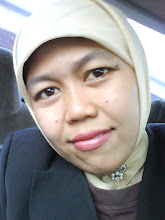Minggu, 16 November 2008
Kuliah Spektroskopi
-elokkamilah-
Ralat Tugas Bahan Alam
Tugas dikirimkan Via email ke alamat : elokkamilah@gmail.com
paling lamat tanggal 1 Desember 2008
-elokkamilah-
Jumat, 14 November 2008
TUGAS KIMIA BAHAN ALAM
Tugas dikumpulkan tanggal 1 Desember 2008
Tugas dikirim ke alamat email elokkamilah@gmail.com dengan subject: nama dan topik tugas. Terima kasih
-elokkamilah-
TUGAS KIMIA ANALISIS SPEKTROSKOPI
Tugas ini dikumpulkan pada saat ujia tengah semester (UTS)
terima kasih
-elokkamilah-
Rabu, 12 November 2008
Selasa, 04 November 2008
LATIHAN SOAL UJIAN UTS KIMIA DASAR I
The first step in obtaining elemental zinc from its sulfide ore involves heating it in air to obtain the oxide of zinc and sulfur dioxide. (a) Calculate the mass of O2 required to react with 7.00 g of zinc sulfide. (b) Which is the limiting reactant?. (c) How much sulfur dioxide is produced?
Zinc and sulfur react to form zinc sulfide, a substance used in phosphors that coat the inner surfaces of TV picture tubes. In a particular experiment 12.0 g of Zn are mixed with 6.50 g S and allowed to react. (a) Which is the limiting reactant? (b) How many grams of ZnS can be formed from this particular reaction mixture? (c) How many grams of which element will remain unreacted in this experiment?
What is the percent composition of chloroform, CHCl3, a substance once used as an anesthetic?
What is the percent composition of ethanol, C2H5OH, a substance once used as an antiseptic?
Which is Bigger if atom/ionic size? Why?
Na or K ; Na or Mg ; Al or I ‘; Na or K ; Na or Mg ; Al or I ?
Which has a higher 1st ionization energy? Why?
Mg or Ca ?; Al or S ?; Cs or Ba ?
Which is more electronegative? Why?
F or Cl ?; Na or K ?; Sn or I ?
Use a periodic table or use the Pauling electronegativity values to classify each of the following compounds as non-polar covalent, polar covalent, coordination covalent or ionic.
F2; H2 ; HF ; O3; HBr; HCl; NH3; NaCl; HNO3 ; NH4+ CaO; MgCl2; dan NaF
Draw Lewis structures of the following.
CCl4; CH2O; C2H2; CH3OH; CH3CHCH2; HCN; NH2OH
Draw resonance forms for the following.
Indicate whether the resonance forms are equivalent in energy. If not, indicate the major resonance contributor (most stable). Click on the arrow to check your answers.
SCN- CH2N2 CH3CO2-
Draw the Lewis structures, give the molecular geometry, and determine whether the following will be polar or non-polar. Click on the arrow to check your answers
CCl4; CHCl3; CH2O; CO2

